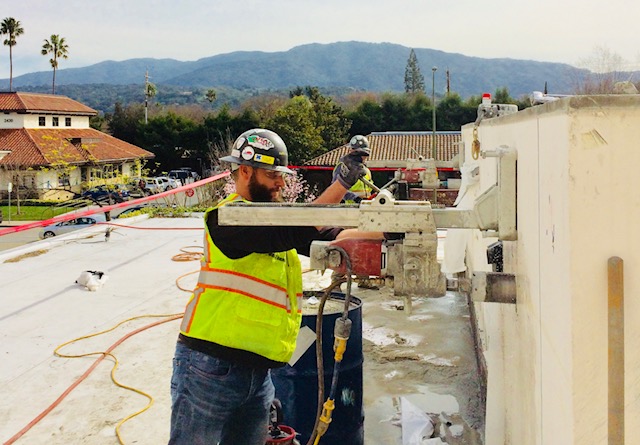Of course, there have always been people who have preferred to work smarter and not harder. They reasoned that it makes more sense to be able to find what you’re looking for under the surface BEFORE you waste the time, energy, and resources to excavate in a place that may or may not yield the results you want.
One of the best-known and most derided archaic methods for this type of subsurface exploration was the use of so-called “dowsing rods,” which are known to have been used as far back as Ancient Egypt but in all likelihood, we’re in widespread use well before then. Made of wood or metal, these tools often consisted of a Y-shaped stick; a pendulum; or a pair of rods. In the latter case, the idea was that the dowser could hold a rod loosely in each hand, parallel to the ground, and pointed outward. When the dowser crossed over the location of the desired material, such as water or gold, the rods would move of their own accord to form an X shape and possibly tilt downward. The strength and type of motion given by the specific rod were said to give an estimate of depth or relative size. Even in the United States, dowsing is still used today in many rural areas to determine the best locations for wells!
However, it’s been clear from the beginning that something better was needed. And in 1910, “something better” finally arrived, in the form of ground-penetrating radar, or GPR.
This was the year that German scientists Gotthelf Leimbach and Heinrich Löwy applied for a patent for a continuous-wave borehole radar system that could be used to locate buried objects, just six years after the first radar patent was issued in 1904. Its first widely known use in the field came in 1929 when it was used to measure the depth of a glacier.
Over the next several decades, as radar technology and techniques advanced, so too did GPR capabilities. However, GPR technology remained a largely untapped and slightly kooky offshoot of radar technology, viewed with skepticism by the scientific establishment and the general public as the high-tech equivalent of a dowsing rod itself. Even as sky- and sea-scanning radar equipment changed the face of modern defense and warfare, the use of GPR seemed pointlessly limited and of minimal value to the average researcher.
This state of affairs persisted until 1972 when NASA equipped the Apollo 17 moon mission with a bespoke GPR unit, which stored its findings on film and was able to achieve penetration of up to 1.3km (.807 mile)!
With the lunar readings, interest in GPR skyrocketed within the ranks of academia, the military, and even law enforcement. Ground-penetrating radar technology quickly from an offbeat Hail Mary play when all else except demolition had failed to the forefront of nondestructive subsurface investigative technologies. From 1974-1976, GPR was used in archaeological studies in Chaco Canyon, New Mexico, marking the first known successful use of ground-penetrating radar on an archaeological site. However, GPR technology was still very expensive and unreliable, making it mostly the province of deep-pocketed universities and government agencies. It wasn’t until the 1980s, when GPR units became relatively affordable, that GPR was ushered into, and adopted for, widespread commercial and scientific use.
Today, GPR is considered a primary tool for a wide range of endeavors and academic disciplines. Archaeologists and forensic scientists use GPR to identify buried structures, human remains, and artifacts without risking damaging them. In engineering and construction, GPR is used for everything from initial construction site analysis and existing utility location to locating and evaluating structural steel and voids in concrete walls and floors. In the military, GPR is used to identify landmines and IEDs in combat zones so they can be safely avoided and/or disposed of. And GPR is used across a wide range of geological disciplines for everything from conducting geological surveys to measuring the depth of polar ice to locating accessible groundwater deposits and even fossilized dinosaurs and other paleontological remains.
The types of GPR units and scans, and the software that makes them useful as field instruments, have evolved as well. The first GPR results looked more like an EKG readout and were limited to a single power setting and an incredibly bulky scanning apparatus. In addition, they didn’t have onboard storage, high-capacity hard drives, or 3D mapping capability. Today’s most commonly used GPR scanners weighing between 50-60lbs can fit in a backpack and can create real-time 3D maps of the subsurface being scanned. They also use alternate power settings to deliver high-resolution/low-penetration mapping and vice versa, giving a more comprehensive view of what lies under the surface. And, best of all for construction crews and engineering applications, they’re fast, taking between 360-400+ scans per second.
In the past 110 years, GPR has come a long way. As technology and computer science continue to evolve, GPR will do so right along with it, making this already trusted tool even more indispensable for any profession where knowing what’s below is a key to safety and success.
Safe2Core is proud to provide GPR scanning services for utility location, in-situ post-construction analysis, engineering forensic purposes, and much more. To find out how Safe2Core can make your construction project work safer, run smoother, and reduce downtime, risk, and danger from unknown hazards beneath the soil, concrete, or asphalt, click here to contact Safe2Core today!





